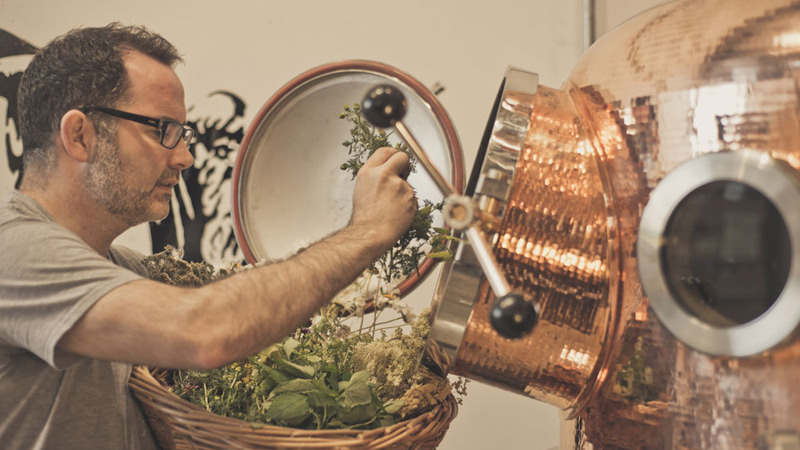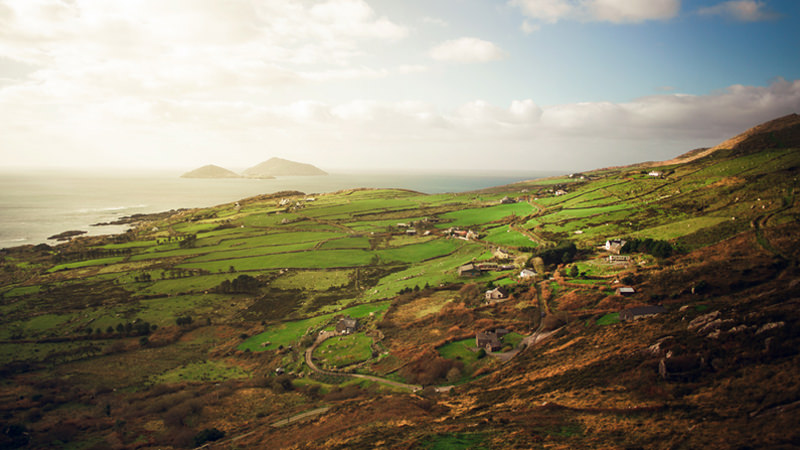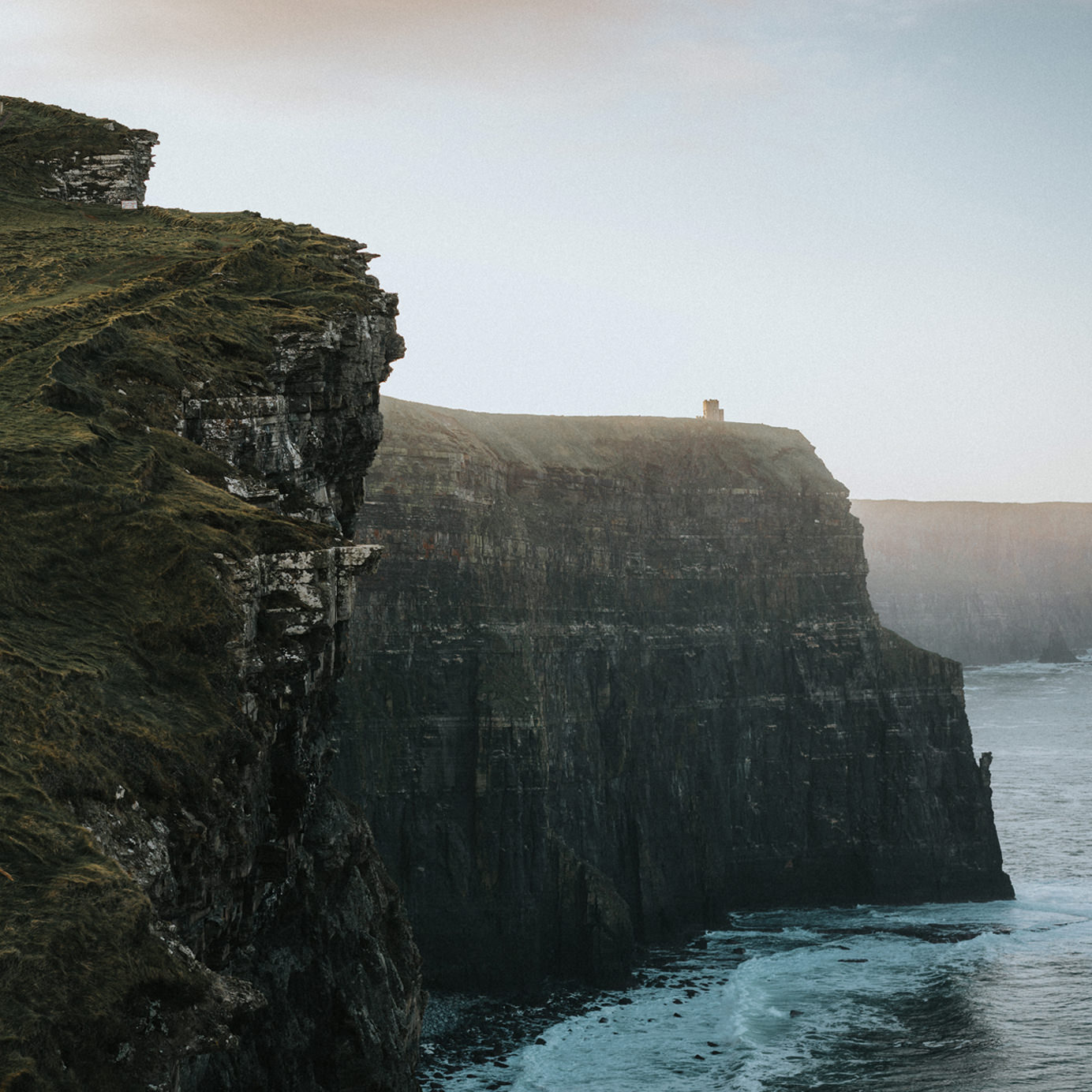Irish whiskey has been on a tear over the past few years, with sales value increasing by 22 percent in the U.S. and 18.5 percent in all markets over the first half of 2017.
But gin is the fastest-growing spirits category in Ireland. There are now 30 Irish brands available, and global exports tripled in volume in 2016. The Irish Spirits Association expects these numbers to increase this year, which means there will be even more Irish gin available here in the U.S.
(This is a good thing for those of us on this side of the pond. Americans like their gin. The Distilled Spirits Council reports that premium gin sales increased here by almost 13 percent in 2017.)
The character of Irish gin can be hard to pin down, according to Justin Green, one of the founders of Bertha’s Revenge Irish Gin. “The botanicals used in Irish gins vary so much, from seaweed to spices to citrus,” he says.

Irish whiskey is made mostly using grain grown in Ireland. Most of the farmers supplying Jameson with its barley, for example, are located within 200 miles of the Midleton distillery, according to Caoimhe Henderson, associate brand manager at Pernod Ricard. Irish whiskey’s rapid growth has all but exhausted local reserves, however, so Irish gin producers have to look elsewhere in continental Europe for their ingredients.
“Most of the Irish gin makers that use a base alcohol derived from grain actually source their spirit from France,” Green says, “All the Irish grain spirit is used in the production of Irish whiskey, and it is almost impossible to purchase Irish neutral grain alcohol at 96 percent.”
Though it might seem like a neophyte to the world of gin, Ireland has been making the stuff for centuries. Cork Dry Gin, now made by a subsidiary of Pernod Ricard, first launched in Cork circa 1793.
“Believe it or not, gin has been distilled in Ireland since the 18th century,” Donal O’Gallachoir, brand manager at Glendalough distillery, says. “It originally was a knock-on effect from the gin craze in London. There were a few distilleries that distilled gin back then to satisfy the growing popularity.”
The rise of Irish gin today can be attributed to several factors. According to O’Gallachoir, the number of whiskey distilleries has increased from three to over 30 in the last decade. This means that new distilleries are turning to gin while their whiskey matures (Irish whiskey legally must be aged for at least three years).
“Increased competition in the Irish gin market has fueled innovation in production, premiumization, innovation in how Irish gin is served, and ultimately greater consumer choice,” O’Gallachoir says.

Another factor is the availability of native botanicals across Ireland with which distilleries can flavor their gin, making them distinctly Irish. Classic juniper appears alongside locally grown meadowsweet, heather, and elderberry.
Lastly, people are just more interested in craft spirits and cocktails overall — and have come to expect more. “People’s tastes are evolving, they now have a more cultured palate and appreciation for craft spirits and cocktails,” says O’Gallachoir. “There is a big interest in the wide flavor profile of what [Irish] gin can be.”
If you’re a diehard gin drinker, or just curious to try something new, here are some brands that you can currently find in the U.S.
Conncullin Irish Gin
Conncullin is distilled at the Connacht Distillery in County Mayo and was named after two lakes, Conn and Cullin, which are the source of the water used at the distillery. Juniper is the foremost flavor in this spirit, augmented by botanicals that include elderberry and hawthorn berry.
Glendalough Wild Botanical Gin
The Glendalough Distillery has released seasonal gin expressions, each flavored and informed by the botanicals available at a particular time of year. The latest release combines all these characteristics into Glendalough Wild Botanical Gin. Forager Geraldine Kavanagh picks a variety of wild botanicals (hence, the name) from the mountains around the distillery to flavor this easy-drinking gin.
Drumshanbo Gunpowder Irish Gin
Gunpowder Gin is distilled at The Shed in County Leitrim, with the mission of matching global botanicals with those from Ireland. This means that strong flavors of Chinese gunpowder tea, kaffir lime, cardamom, and Chinese lemon go toe-to-toe with juniper and local meadowsweet. Overall, a unique and interesting spirit.
Dingle Gin
Dingle Gin is a London dry-style gin but made with botanicals that are supposed to capture the essence of the wilds of Kerry, Ireland. Rowanberry, fuchsia, bog myrtle, and heather are all macerated into the spirit along with juniper, giving this gin a nice floral character.
Bertha’s Revenge
This gin, produced by Ballyvolane House Spirits Company, is a bit of an outlier, considering that it’s distilled from whey alcohol instead of grain. Whey alcohol is a dairy byproduct made from the liquid whey that’s separated from the curds in the cheese-making process. Bertha’s Revenge was named after a famous County Kerry cow that lived to the age of 49 and gave birth to 39 calves — that’s quite a cow. Botanicals in this citrus-forward gin include juniper, lemon, lime, and bitter orange.
